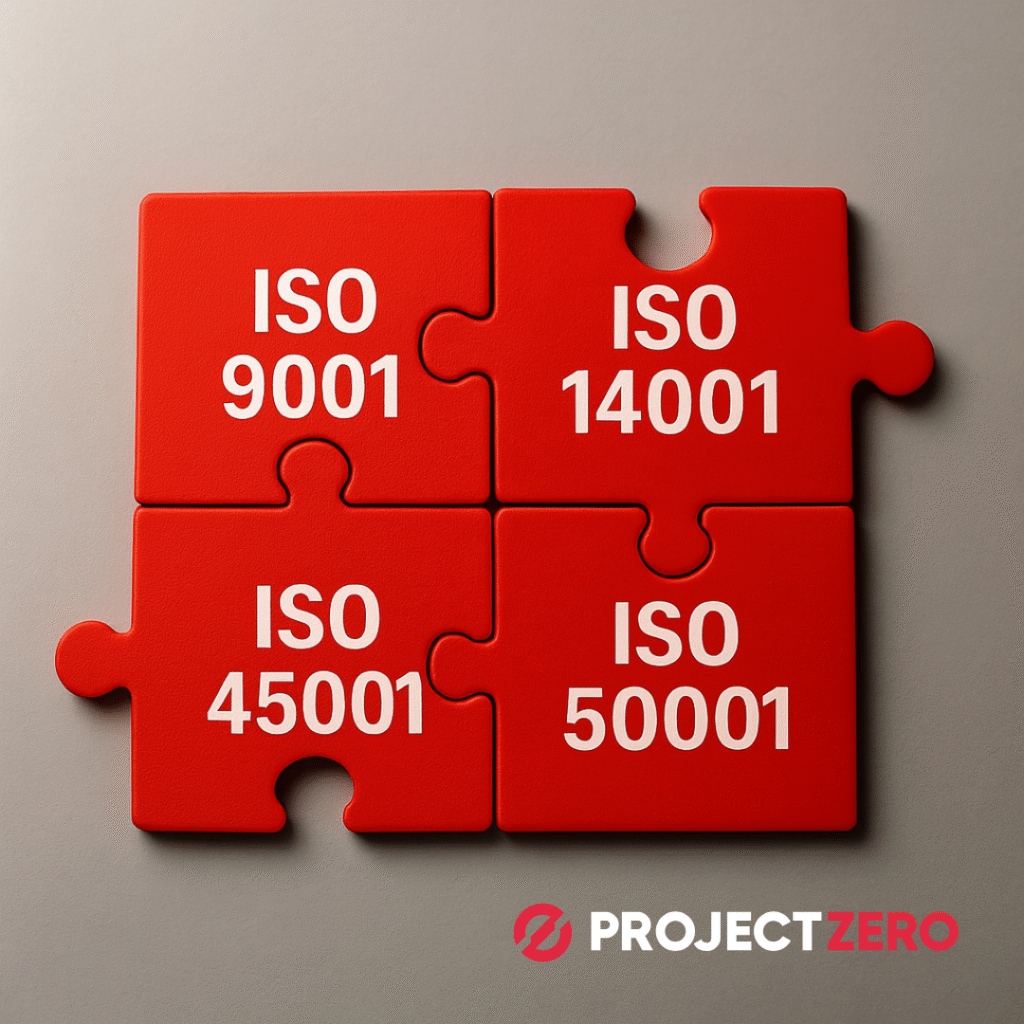Discover how ISO 9001, 14001, 45001 and 50001 help companies reduce risks, costs and downtime while improving safety and competitiveness.

Management systems are often perceived as bureaucracy aimed at obtaining a certification or as requirements imposed by clients to be eligible as suppliers. Sets of procedures, performance indicators, training and more, under this approach, become merely formal tools that are then not implemented in day-to-day operations, leading to inefficiencies and lower safety levels within the company. Let’s look in detail at why this happens.
From the regulatory framework to business strategy
International ISO standards provide a common language and a shared method for managing quality, environment, health & safety, and energy. The main references are:
- ISO 9001: process quality and customer satisfaction.
- ISO 14001: environmental impact and sustainability.
- ISO 45001: occupational health and safety.
- ISO 50001: energy efficiency and energy management.
These are not “stand-alone rules,” but tools which, when integrated, become levers for competitiveness and business resilience.
The technical view: how a management system works
An effective management system is not just a manual full of procedures: it is a set of policies, processes and responsibilities that are reflected in the organization’s daily life.
- Definition and application: understanding which critical processes to control and why.
- Evaluation: collecting reliable data on quality, emissions, injuries, consumption.
- Integration: embedding controls and training into design and operations.
- Avoiding common mistakes: procedures that are too bureaucratic, KPIs disconnected from strategy, insufficient management involvement.
The key point is this: a management system only works if it is alive—i.e., integrated into everyday decision-making.
Real cases: when an ISO system makes the difference
A manufacturing company that centralized documentation and KPIs in line with ISO 9001 and 14001 reduced internal nonconformities by 25%. Conversely, an energy-sector company was excluded from a European tender because ISO 50001 had not been properly implemented: the energy data were not tracked in a verifiable way.
The lesson is clear: ISO systems are not “pieces of paper,” but business tools.
How to truly implement an ISO system
Implementation should follow a gradual path that delivers visible results from the first months:
- Initial assessment: a rapid audit to understand the gaps.
- 90-day roadmap: immediate actions, quick wins and first metrics.
- 12-month roadmap: full process integration, management review, certification readiness.
- Clear governance: defined roles for quality managers, HSE and energy managers.
- Technology as an enabler: digital platforms for documents, audits and data analytics.
Resilience and handling the unexpected
A good management system also anticipates margins for error. This means calculating how much disruption the company can withstand before suffering serious damage. Linking ISO standards to a business continuity plan (ISO 22301) helps reduce the impact of blackouts, incidents or supply-chain interruptions.
Adopting ISO 9001, 14001, 45001 and 50001 does not just mean passing an audit. It means building solid foundations to reduce risks and contain costs, strengthen safety levels and improve sustainability—while demonstrating tangible reliability to customers and stakeholders.
From this perspective, ISO systems become not only a compliance tool, but a true strategic ally for business growth.
Companies that invest in these tools today are more likely to be competitive tomorrow.
If you want to understand how to apply ISO systems in your sector, ProjectZero can support you with consulting, training and digital tools tailored to your context.
